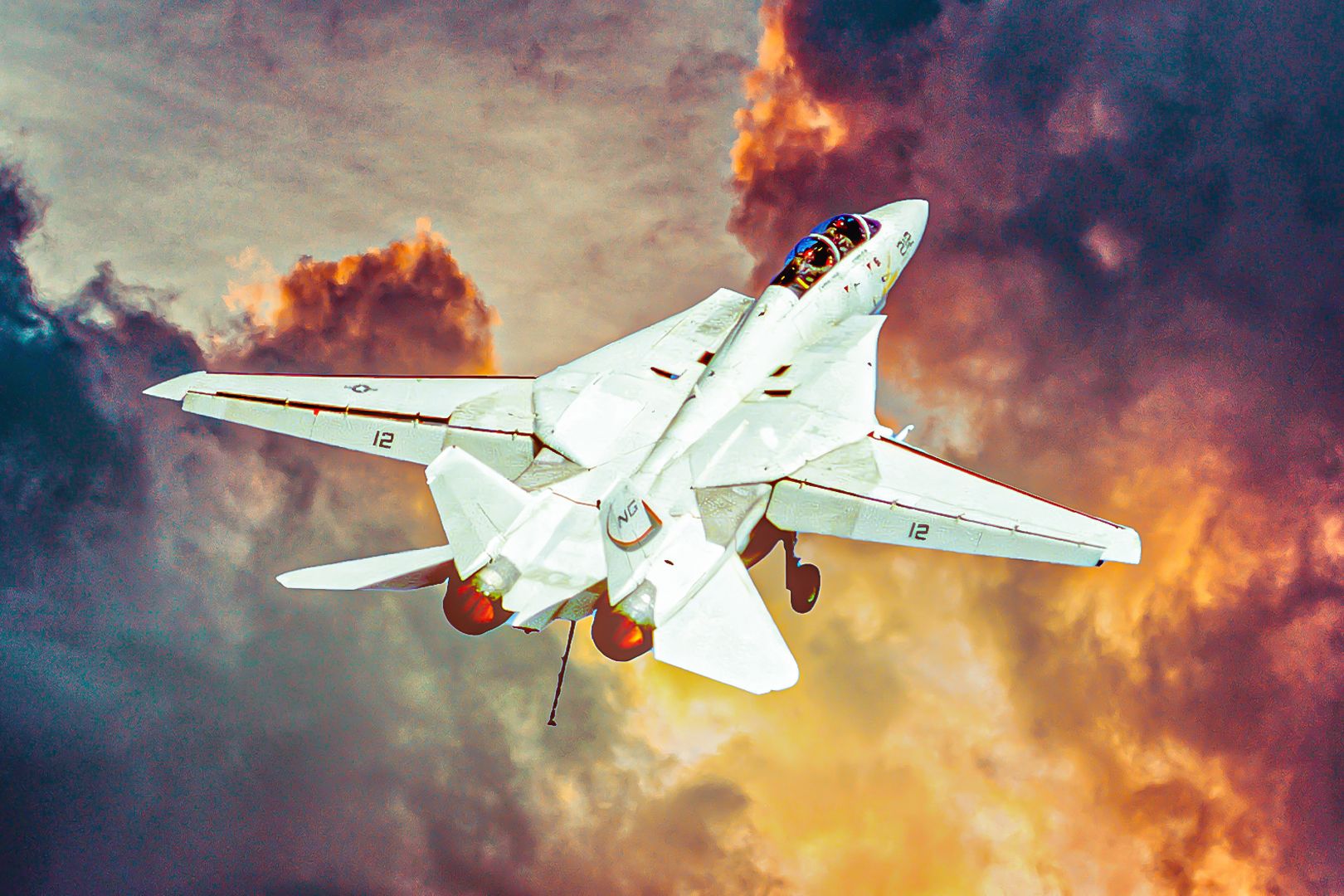Summary The F-14 Tomcat's variable-sweep wings allow high-speed combat and slow-speed missions efficiently. Equipped with AIM-54 Phoenix missiles, the F-14 could engage from distances exceeding 90 miles. The CADC automatically controls the wing sweep based on mission requirements.
The Grumman F-14 Tomcat is a twin-engine supersonic variable-sweep wing fighter aircraft. The F-14 was designed and developed by Grumman in the late 1960s to have carrier-operation capability. The aircraft performed its first flight in December 1970 and entered service with the United States Navy in September 1974.

The aircraft was first deployed on the USS Enterprise (CVN-65). The Tomcat is known for its precise ground attack capabilities and air-to-air combat, thanks to the variable-sweep wings. This article focuses on the evolution of the very design element that made the F-14 Tomcat super successful.
The Grumman F-14 Tomcat Crew: 2 (pilot and radar intercept officer) Length: 62 ft 9 in (19.13 m) Wingspan: 64 ft 1.5 in (19.
545 m) Swept wingspan: 38 ft 2.5 in (11.646 m) swept Height: 16 ft (4.
9 m) Wing area: 565 sq. ft (52.5 m2) wings only The effective area, including fuselage: 1,008 sa.
ft (94 m2) Airfoil: Grumman (1.74)(35)(9.6)-(1.
1)(30)(1.1) root, Grumman (1.27)(30)(9.
0)-(1.1)(40)(1.1) tip The F-14 Tomcat was designed to be a long-range interceptor and an air superiority fighter.
The aircraft was designed to operate efficiently, both as high-speed combat missions and low-speed missions. Thanks to its variable-sweep wings that move automatically during flight. A swept-back configuration aids in greater combat performance during high-speed air-to-air interdiction missions.
On the other hand, the forward-swept configuration is ideal for low-speed close-air-support missions. The Grumman F-14 Tomcat was the answer to the US Navy’s requirement for a defense fighter that could engage high-altitude bombers from well beyond visual range. According to the National Naval Aviation Museum , “Equipped with long-range AIM-54 Phoenix air-to-air missiles, F-14s could engage multiple hostiles over 90 miles away.
Needing an interceptor's high speed while carrying this heavy ordnance, Grumman produced the highly effective variable-sweep wing of the F-14, enabling it to operate at a wide range of airspeeds.” 10 years before "Top Gun" made the F-14 Tomcat famous with US moviegoers, the Soviets tried to retrieve one via a fishing expedition. The variable wing sweep A variable-sweep wing imitates birds' movement in the air Wings are extended to glide or slow down Wings are contracted to speed up The F-14 Tomcat's wing has a variability range of 48 degrees.
From its original 20-degree forward position, the wings can be swept all the way to 68 degrees. The aircraft can land with its wings fully swept to 68 degrees. Notably, this configuration may pose a safety hazard due to significantly increased stall speed.
Pilots ensure they remain within the safe descent and approach speed when configured with completely swept wings. According to Chris Clark, the Chief Test Engineer for Air Test and Evaluation Squadron 23 at Naval Air Systems Command (NAVAIR), as recorded by the Smithsonian Magazine , “The aircraft itself was very complex, and we built it without models or simulations. A lot of it boiled down to slide rules and hard paper calculations.
” The F-14 Tomcat was retired and replaced by the McDonnell Douglas F/A-18 Hornet. Wingspan: 64 ft 1.5 in (19.
545 m) Forward sweep angle: 20 degrees Swept wingspan: 38 ft 2.5 in (11.646 m) Full swept angle: 68 degrees The US Navy requested an aircraft that could maneuver efficiently at different speeds.
Tom Lawrance, an aerodynamics expert at NAVAIR, explained. “In those days, [the Navy] wanted high-altitude maneuverability. If you had the wing pivots closer to the fuselage, you get a very large shift in the center of pressure” While the F-14 Tomcat has been retired, the F-22 Raptor remains active with the USAF.
The Central Air Data Computer (CADC) Maximum speed: Mach 2.34 (1,544 mph, 2,485 km/h) at altitude Range: 1,600 NM (1,800 mi, 3,000 km) Combat range: 500 NM (580 mi, 930 km) Service ceiling: 53,000 ft (16,000 m) plus Rate of climb: 45,000 ft/min (230 m/s) plus Takeoff roll: 2,500 ft (760 m) Landing roll: 2,400 ft (730 m) The aircraft features a Central Air Data Computer (CADC) that automatically controls the sweep angle during flight. The CADC is programmed to optimize the aircraft’s lift-to-drag ratio with Mach number while varying the sweep angle.
While the CADC provides optimized sweep angles based on mission configuration and requirements, pilots can manually override the system if desired. At 68 degrees (maximum in-flight sweep angle), the aircraft is still too wide to comfortably fit on the aircraft carrier. As such, the parking position allows for a greater sweep angle, up to 75 degrees, overlapping the horizontal stabilizers to save space on the flight deck.
The aircraft was quite the flying machine..



















